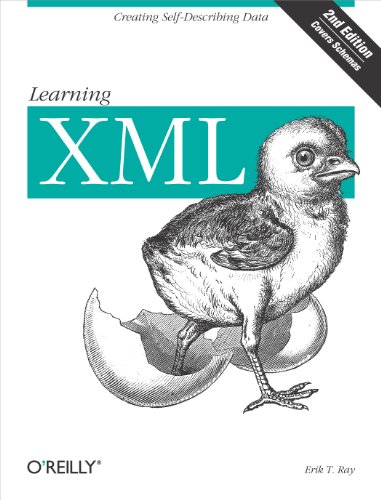Learning XML, Second Edition
Ray, Erik T.
About the Book
Description:
. Former Library book. All orders guaranteed and ship within 24 hours. Before placing your order for please contact us for confirmation on the book's binding. Check out our other listings to add to your order for discounted shipping. Seller Inventory # BOS-X-12g-01053
About this title:
Synopsis:
This second edition of the bestselling Learning XML provides web developers with a concise but grounded understanding of XML (the Extensible Markup Language) and its potential-- not just a whirlwind tour of XML.The author explains the important and relevant XML technologies and their capabilities clearly and succinctly with plenty of real-life projects and useful examples. He outlines the elements of markup--demystifying concepts such as attributes, entities, and namespaces--and provides enough depth and examples to get started. Learning XML is a reliable source for anyone who needs to know XML, but doesn't want to waste time wading through hundreds of web sites or 800 pages of bloated text.For writers producing XML documents, this book clarifies files and the process of creating them with the appropriate structure and format. Designers will learn what parts of XML are most helpful to their team and will get started on creating Document Type Definitions. For programmers, the book makes syntax and structures clear. Learning XML also discusses the stylesheets needed for viewing documents in the next generation of browsers, databases, and other devices.Learning XML illustrates the core XML concepts and language syntax, in addition to important related tools such as the CSS and XSL styling languages and the XLink and XPointer specifications for creating rich link structures. It includes information about three schema languages for validation: W3C Schema, Schematron, and RELAX-NG, which are gaining widespread support from people who need to validate documents but aren't satisfied with DTDs. Also new in this edition is a chapter on XSL-FO, a powerful formatting language for XML. If you need to wade through the acronym soup of XML and start to really use this powerful tool, Learning XML, will give you the roadmap you need.
Review: Although Learning XML covers XML rather broadly, it nevertheless presents the key elements of the technology with enough detail to familiarize the reader with this crucial markup language. This guide is brief enough to tackle in a weekend.
Author Erik T. Ray begins with an excellent summary of XML's history as an outgrowth of SGML and HTML. He outlines very clearly the elements of markup, demystifying concepts such as attributes, entities, and namespaces with numerous clear examples. To illustrate a real-world XML application, he gives the reader a look at a document written in DocBook--a publicly available XML document type for publishing technical writings--and explains the sections of the document step by step. A more simplified version of DocBook is used later in the book to illustrate transformation--a powerful benefit of XML.
The all-important Document Type Definition (DTD) is covered in depth, but the still-unofficial alternative, XML Schema, is only briefly addressed. The author makes liberal use of graphics, tables, and code to demonstrate concepts along the way, keeping the reader engaged and on track. Ray also goes deep into some discussion of programming XML utilities with Perl.
Learning XML is a very readable introduction to XML for readers with existing knowledge of markup and Web technologies. It meets its goals very well--to deliver a broad perspective of XML and its potential. --Stephen W. Plain
Topics covered:
- XML overview
- XPointer
- XLink
- XHTML
- Presentation with Cascading Style Sheets (CSS)
- Document Type Definitions (DTDs)
- XML Schemas
- Transformation with XSLT
- Internationalization
- Simple API for XML (SAX)
Bibliographic Details
Title: Learning XML, Second Edition
Publisher: O'Reilly Media
Publication Date: 2003
Binding: Soft cover
Condition: Good
Edition: 2nd Edition
